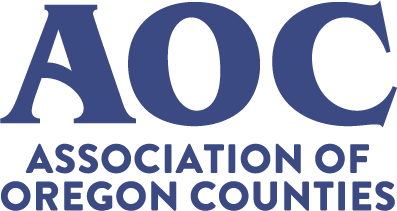
Feb 23, 2024 | AOC Business Partner
Sponsored content contributed by AOC Business Partner: Mark O. Hatfield School of Government, Portland State University
Portland State University’s Center for Public Service Fellowships Program has recruited exceptionally qualified, trained, and diverse fellowship candidates from prestigious institutions throughout the U.S to serve as project managers for Oregon’s public sector in 2024-25.
Our fellows provide skill capacity near-term to ensure critical projects are completed, despite staffing constraints. Candidates are prepared to support counties in areas such as research and analysis, community engagement, program evaluation, and so much more.
The Hatfield Resident Fellowship (program cost: $46,782) is an eight-month commitment for recent Master’s and Ph.D. graduates. The Oregon Summer Fellowship (cost: $11,416) is a 10-week program designed to accommodate currently enrolled graduate students.
Our applicants are screened rigorously and have a strong record of scholarship and demonstrable interest in areas including climate policy, health equity, public administration, and beyond.
There have been multiple fellowship projects sponsored by counties in recent years. Seeking to develop succession plans for key positions within their organization, a county contracted with PSU for an Oregon Summer Fellow to assist with a review of best practices, the development of new institutional relationships, and an update to the county’s workforce processes. Ultimately, the fellow provided a significant value-add in developing recommendations for the county’s planning.
Separately, an Oregon county identified a need to implement a review of fee practices within their internal business operations. Requirements included a review of organizational structure, service levels, and quality control and assurance. By conducting interviews with managers, aggregating the data, and developing an effective dashboard system, the fellow supported the county’s efforts to improve programmatic efficiency.
Our fellowships are an excellent opportunity for your county to gain support for important projects while also providing an opportunity for individuals interested in public service to gain valuable work experience. Our matching process includes an initial candidate identification, a series of interviews, and ultimately the county selects the candidate of their choice for the fellowship. From there, PSU will assist in completing an inter-governmental agreement or a service order contract through OregonBuys, and the training of your new fellow prior to their project start date.
Those interested in learning more about the sponsor process are encouraged to visit our website (click link) or submit a sponsor application (click link). Alternatively, please contact Meaghan Lingo, Program Administrator (mlingo@pdx.edu), or our office account (psfellows@pdx.edu) with any questions.

Feb 23, 2024 | AOC Business Partner
Sponsored content contributed by AOC Business Partner: NACo
Active participation in NACo committees is the key to amplifying county influence at the federal level. This article delves into the transformative potential of serving on a NACo committee, highlighting opportunities and benefits for county officials.
Featuring over 1,500 participants, including 77 from Oregon, NACo committees cover a diverse range of topics — from arts and culture to veteran affairs. This engagement sets up a strategic pathway to secure federal policies and resources favorable for counties, requiring just one hour of your commitment per month.
Applying for a committee is seamless, with the flexibility to join as a member any time during the year. Committee terms run from July to July.
For those aspiring to leadership roles, applications open each spring for Chair and Vice-Chair positions and appointments are announced at NACo’s Annual Business Meeting in July.
Serving on a NACo committee is an opportunity to make a tangible impact on issues that matter. Networking opportunities abound, allowing members to connect with fellow leaders and tap into extensive networks through committee liaison staff.
Participating on a NACo committee is a strategic gateway to active participation in shaping federal policy and advocating for counties. As the saying goes, “If you aren’t at the table, you are on the menu!” NACo committees provide the platform where impactful change begins resulting in stronger counties and a stronger America.
Explore your options at www.naco.org/getinvolved or for questions, please email membership@naco.org.

Feb 23, 2024 | AOC Business Partner
Sponsored content contributed by AOC Business Partner: iSector
The Oregon iSector provides a platform for launching cross-sector partnerships to enable leaders in communities throughout the state to work together to address challenges and seize opportunities to build thriving communities.
Partnerships are not always easy. Each sector has different modes of operating, different timelines, different incentives, different constraints, etc. To help overcome these challenges, the Oregon iSector connects public, private, and civic partners, making it easier for them to work together to build a thriving Oregon.
Following are some iSector partnerships underway:
The Housing Innovation Partnership
We are home to the Housing Innovation Partnership (HIP), a collaborative of 35+ organizations from across sectors, formed in early 2022 with one shared goal: addressing Oregon’s housing needs. Over the past two years, the HIP has been conducting research and developing innovative approaches focused on incentives for middle housing financing, modular housing, and local capacity building. The 2023 legislative session allocated $20 million for a Workforce and Affordable Housing Loan Guarantee Fund, $5 million to support housing and community development capacity for local governments which we will now assist jurisdictions in accessing, and a $20 million allocation for a Modular Factory Incentive Fund which resulted in $5 million going to the following organizations: Blazer Industries Inc.; Intelifab, LLC; Pacific Wall Systems, Inc.; and Zaugg Timber Solutions, Inc.
Northwest Rural Investment Strategy
Last November, we worked with USDA Rural Development in Oregon, Washington, and Alaska to hold the Northwest Rural Investment Strategy Summit. The Summit’s purpose was to assist rural communities in seizing once-in-a-generation funding opportunities now available through federal legislation. The event brought together federal, state, philanthropic, impact funders, and technical assistance experts to discuss how to support community partnerships as they plan and develop their community infrastructure projects for the next decade.
Housing Assistance for Rural Communities
Most recently, we have begun work to assist rural communities, specifically those under 10,000 population, in planning for and developing much needed housing. As a part of this work, we will be establishing a Housing Production Readiness Assessment Dashboard that will help rural jurisdictions identify and tackle barriers to development, along with providing them with on-the-ground technical support. For example, we are working with the City of Sutherlin to find public and private partners who can assist in making a workforce housing project successful.
Our Services
Cross-sector partnerships have emerged as an important way for leaders to address complex social issues. Given the many challenges of working effectively across sectors, the Oregon iSector provides a variety of services to leaders. We provide government, philanthropic, private, and civic leaders with the following:
- Consultation – Strategic consultation and advice on tackling issues that call for cross-sector participation to achieve desired outcomes.
- Issue Assessment – Information gathering and analysis regarding a particular issue or opportunity; the potential for successful partnership is assessed; and recommendations are developed for whether and how to proceed.
- Broker/Intermediary Services – Assist leaders in all the steps needed to initiate a successful cross-sector partnership.
- Hosting – Provide the platform wherein the cross-sector partnership operates: leveraging the needed resources and guiding partners as they develop their strategic priorities and action plans.
- Advocacy – Drive needed action for the partnership to implement and achieve its goals.
Are you a leader interested in cross-sector partnerships? Let us know. We support leaders that want to address the following issues:
- Workforce Housing
- Rural Development
- Offsite Housing Construction (modular and mass timber construction)
- Adequate and Affordable Childcare
- Building an Inclusive Economy
- Forest Health and Restoration
- Revitalization of Underserved Communities
Contact Us
info@isector.org
isector.org

Feb 22, 2024 | AOC Business Partner
Sponsored content contributed by AOC Business Partner: GovOS
Short-term rentals (STRs) have taken on somewhat of a controversial reputation in recent years, with residents and municipality leaders alike discussing the short- and long-term impacts on communities. But during these conversations, community members are also exploring the benefits to communities as they determine how best to manage STRs.
One major benefit that often comes up is the significant tax revenue short-term rentals generate, which can be reinvested back into the community for the greater good. If you are exploring the impacts of STRs on your municipality, here are ten ways tax revenue from short-term rentals can benefit the community in the long term:
Revitalizing Community Centers
One way tax revenue from STRs can be utilized is by funding the construction or improvement of community centers. These centers are great gathering places for residents and can bring communities together by hosting a variety of activities, including educational programs, fitness classes for all ages, and community events.
Going Greener with Environmental Conservation
Tax revenue from STRs can be allocated to initiatives focused on environmental conservation. For instance, funds can be used for trash cleanup programs, protecting natural habitats, or promoting sustainable practices within the community. The city of Aspen plans to use roughly 30% of its anticipated $10 million in STR tax revenue to fund environmental-protection initiatives and maintain water infrastructure.
Building Playgrounds and Park Enhancements
The revenue collected from STRs can contribute to the development and maintenance of playgrounds and parks, similar to the all-accessible playground built in Aiken, South Carolina. These spaces provide recreational opportunities for families of all needs and help foster a sense of community by bringing people together in shared outdoor spaces.
Say Hello to Visitor Centers
Investing in visitor centers can enhance tourism infrastructure and attract more visitors to the community. Tax revenue from STRs can be used to create welcoming spaces that offer information about local attractions, events, and accommodations; thereby promoting economic growth and supporting local businesses.
Increasing Lifeguards and Beach Safety
Coastal communities that rely on STRs can utilize tax revenue to hire and train lifeguards, ensuring the safety of residents and visitors enjoying the beach. Leaders in Brevard County, a popular Florida tourist destination, are looking to use STR tax revenue to hire more lifeguards and increase water safety.
Investing in Major Infrastructure Upgrades
By collecting taxes from STRs, local governments can invest in critical infrastructure projects that benefit the entire community. This includes improving roads, bridges, public transportation, and utilities, ultimately enhancing the livability and functionality of the area.
Sparking Creativity with Arts and Culture
Tax revenue from STRs can be used to support arts and cultural programs that enrich the community. The city of Austin is in talks with the City Council to start tapping into millions in uncollected STR tax revenue to fund its Music and Art Commissions and its local creative community.
Chalking up Educational Initiatives
Investing in education is paramount to a community’s long-term success. Tax revenue from STRs can be channeled into educational initiatives, such as providing scholarships, supporting after-school programs, or upgrading school facilities and resources.
Focusing on Public Safety
Tax revenue from STRs can contribute to public safety efforts. It can be used to hire additional police officers, improve emergency response systems, or invest in crime prevention initiatives, ensuring that residents and visitors feel secure within the community.
Helping Build Affordable Housing
With the housing crisis affecting millions of Americans, some towns are looking to use STR revenue to help fund more affordable housing developments. The Martha Vineyard Commission on affordable housing recently met to discuss how to utilize its millions of STR tax revenue to make housing more affordable for year-round residents.
Accurate and efficient tax collection plays a crucial role in maximizing the benefits of tax revenue from STRs. By embracing the positive impacts of STRs, local governments can increase their revenue collection capabilities, enabling them to allocate more funds toward initiatives that enhance the community’s overall well-being.

Feb 22, 2024 | AOC Business Partner
Sponsored content contributed by AOC Business Partner: Cintas
Turn over a new leaf this spring with a focus on workplace safety. Here are six training topics to keep in mind for your business.
Just as businesses conduct spring cleaning to discard unwanted items, this season should be used as an opportunity to rid the workplace of poor safety habits. To help organizations move their safety programs forward, Cintas Corporation (NASDAQ: CTAS), a leading provider of safety training, personal protective equipment (PPE) and first-aid solutions, has identified six safety spring training topics. Developed from Cintas’ most requested safety training programs, the list offers insight into the issues most impacting businesses today.
“Training isn’t a ‘one and done’ initiative. Businesses need to provide employees with ongoing refreshers,” said Cara Beaumont, Director of Marketing- First Aid and Safety, Cintas. “We know this list helps organizations identify potentially overlooked areas in their operations so they can continue making training a priority.”
CINTAS’ TOP-SELLING ONLINE TRAINING COURSES INCLUDE:
HAZARD COMMUNICATION (HAZCOM)
By June 1, 2015, chemical manufacturers, importers, distributors and employers must comply with the Occupational Safety and Health Administration’s (OSHA) modified final rule for the Globally Harmonized System of Classification and Labeling of Chemicals (GHS). Now is an ideal time to train employees on chemical hazards, new labeling elements and the format for safety data sheets.
FIRE EXTINGUISHERS
Businesses need to be prepared year-round for a potential fire, meaning employees should know how to properly use a fire extinguisher as well as the various types of extinguishers that exist for different purposes.
BLOODBORNE PATHOGENS (BBPs)
BBPs are microscopic organisms present in blood that can cause infection. To reduce exposure to BBPs, employees need to know what types of PPE are required for certain tasks, how to put on and remove PPE properly and how to respond when an incident occurs.
FORKLIFT SAFETY
According to OSHA, forklifts are the cause of approximately 34,900 serious injuries a year. When dealing with battery-operated forklifts, employers should have an eyewash station installed and working nearby to minimize the impact of injuries caused by battery acid splashes or dust and flying debris. Training helps employees understand how to safely operate a forklift and use an eyewash station during an emergency.
CPR/AED
CPR and the use of an Automated External Defibrillator (AED) can sometimes help an employee whose breathing or heartbeat has stopped during sudden cardiac arrest. Online training teaches employees the signs and symptoms of cardiac arrest, stroke and choking so that they can quickly and properly administer CPR and operate an AED. Oftentimes, organizations will supplement online training with hands-on, instructor-led courses so that employees can use CPR and an AED on a mannequin.
DISTRACTED DRIVING
Each day, more than nine people are killed and 1,153 people are injured in crashes that reportedly involve a distracted driver, according to the Centers for Disease Control and Prevention (CDC). Training reinforces the fact that talking or texting on a cell phone, eating and other activities put drivers and others on the road at risk. Training also provides employees with defensive driving skills so that they can potentially avoid accidents with distracted drivers.
“Our online training platform gives organizations anytime, anywhere access to safety courses specific to their business needs,” added Beaumont. “Not only does this improve safety and productivity, it solves training challenges for a dispersed workforce by ensuring that the information presented is consistent and up to date.”
For more information about training solutions from Cintas, click here.
CINTAS CAN HELP KEEP YOUR BUSINESS READY™
- On-site assessment to discuss fire protection solutions for your business*
- Customized service dates that fit your busy schedule*
- Routine testing, inspection and maintenance of your fire protection equipment*
*Certain services may not be available in all markets.





